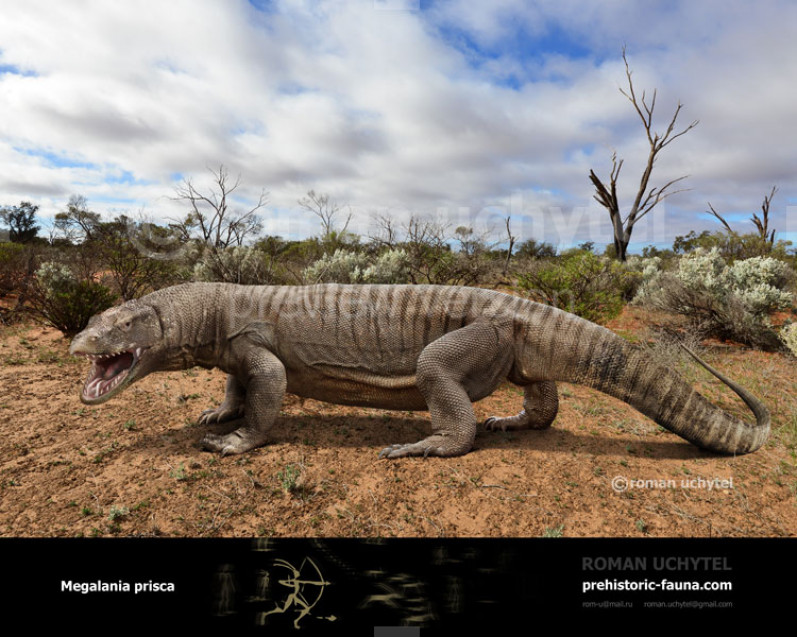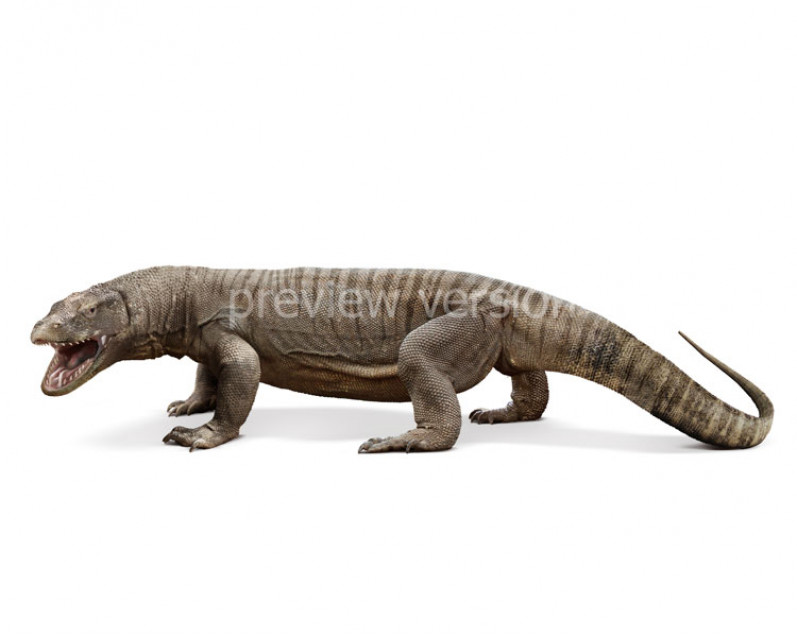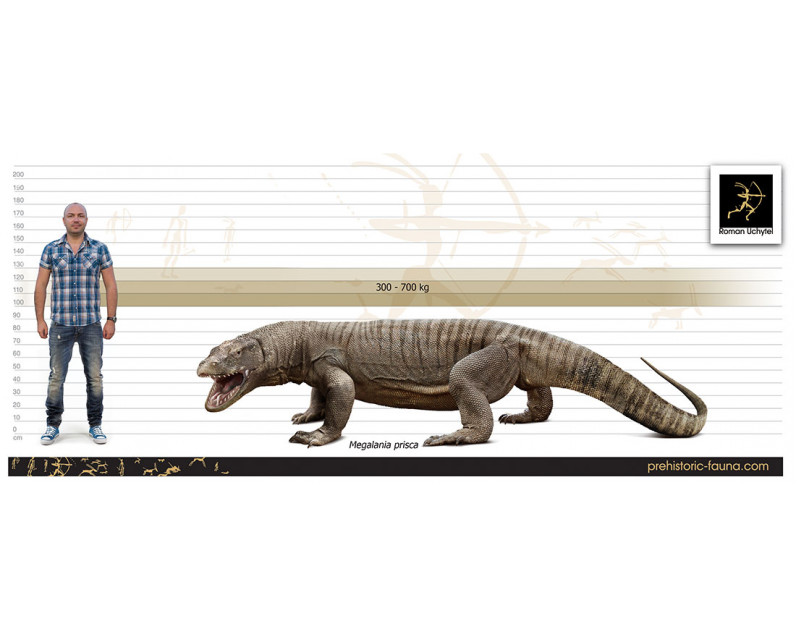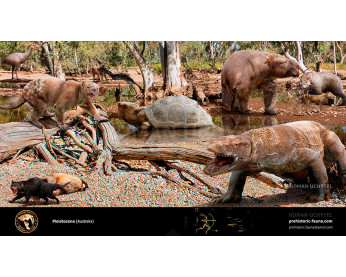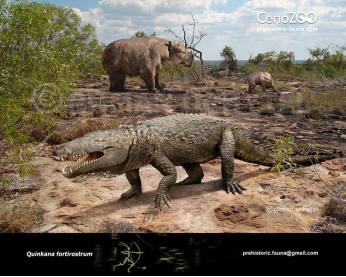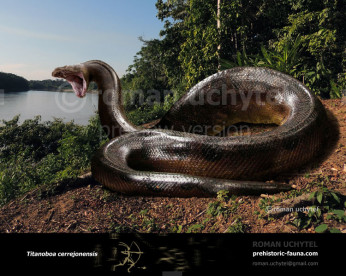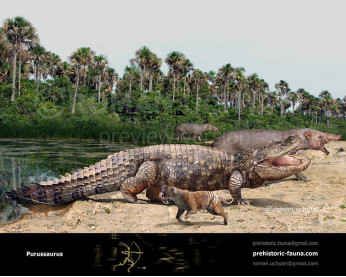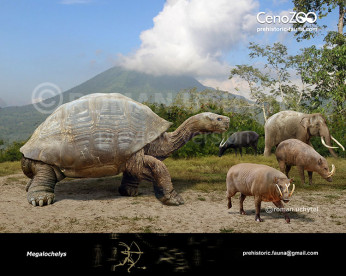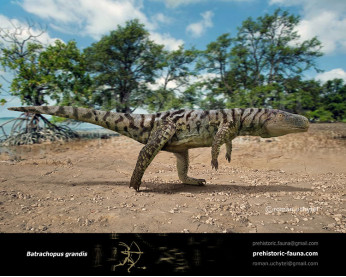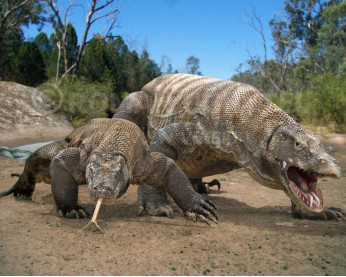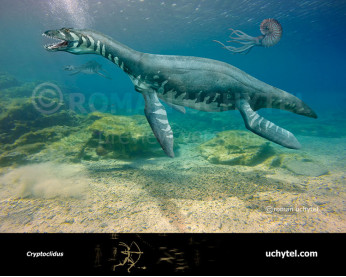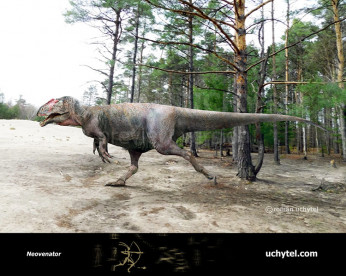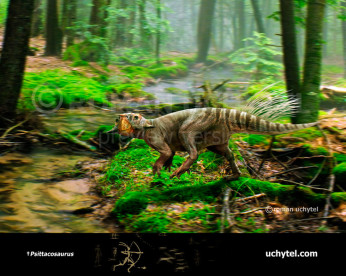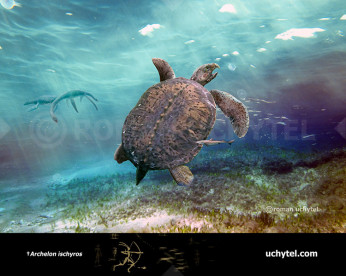Megalania prisca
245245Megalania (†Varanus priscus (Owen, 1859))
Class: Reptilia
Order: Squamata
Suborder: Scleroglossa
Superfamily: Varanoidea
Family: Varanidae
Dimensions: length - 1,5 - 5 m, weight - 50 -300 kg
Expansion: Southern Australia during the Pleistocene (40,000 years ago.)
Megalania is an extinct giant lizard that live in Australia in the Pleistocene era. It belonged to the family of monitor lizards (Varanidae) and was the largest known to science terrestrial lizards, reaching five meters in length and weighing more than 300 kg. The author of the Megalania prisca name was Sir Richard Owen (1859). Megalania name is made up of two Greek words: Mega - "great", "big", and lania - "butcher". The word "prisca", in Greek, means "ancient" and the full name of the species can be translated as a "ancient great butcher." First this species was described by Owen as the type species of a new genus Megalania, but many scientists attribute this species to the genus Varanus, regarding genus Megalania as a junior synonym. In this approach, the specific name of Megalania can be written as Varanus priscus, that is, "an ancient monitor lizard." This species lives in Australia and became extinct about 40,000 years ago. Megalania hunting in the grassy savannas and sparse forests of various animals: reptiles and birds, kangaroos and Diprotodon. Staying on top of the food pyramid, Megalania not disdain carrion in the same way as its modern relatives - Komodo dragon (Varanus komodoensis). It's hard to say what caused the extinction of these predators. Probably - the appearance of the human on the continent.
Megalania (†Varanus priscus (Owen, 1859))
Class: Reptilia
Order: Squamata
Suborder: Scleroglossa
Superfamily: Varanoidea
Family: Varanidae
Dimensions: length - 1,5 - 5 m, weight - 50 -300 kg
Expansion: Southern Australia during the Pleistocene (40,000 years ago.)
Megalania is an extinct giant lizard that live in Australia in the Pleistocene era. It belonged to the family of monitor lizards (Varanidae) and was the largest known to science terrestrial lizards, reaching five meters in length and weighing more than 300 kg. The author of the Megalania prisca name was Sir Richard Owen (1859). Megalania name is made up of two Greek words: Mega - "great", "big", and lania - "butcher". The word "prisca", in Greek, means "ancient" and the full name of the species can be translated as a "ancient great butcher." First this species was described by Owen as the type species of a new genus Megalania, but many scientists attribute this species to the genus Varanus, regarding genus Megalania as a junior synonym. In this approach, the specific name of Megalania can be written as Varanus priscus, that is, "an ancient monitor lizard." This species lives in Australia and became extinct about 40,000 years ago. Megalania hunting in the grassy savannas and sparse forests of various animals: reptiles and birds, kangaroos and Diprotodon. Staying on top of the food pyramid, Megalania not disdain carrion in the same way as its modern relatives - Komodo dragon (Varanus komodoensis). It's hard to say what caused the extinction of these predators. Probably - the appearance of the human on the continent.

